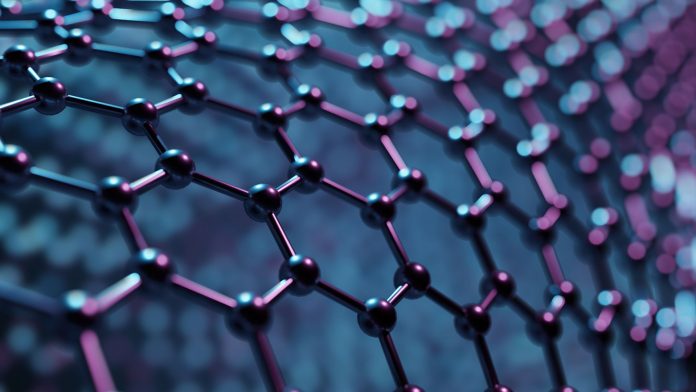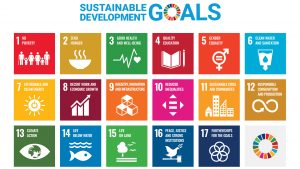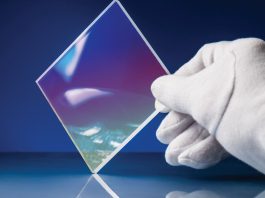Vincenzo Palermo, Vice Director of the Graphene Flagship, discusses how graphene technologies will contribute to the UN’s Sustainable Development Goals.
The 17 sustainable development goals (SDGs) form the core of the United Nations’ 2030 Agenda for Sustainable Development, adopted by all UN member states in 2015. They are a call to action for organisations and individuals, as well as countries. They act as a blueprint for a world with improved health and education, reduced inequality, increased economic growth, and a protected environment.
In a webinar hosted by the Brussels Times in July 2020, Dorothy Gordon, UNESCO chair of the Information for All Programme, commented: “We now realise that technology is a transformative enabler for every sector of society – and therefore all SDGs. There is no SDG that can be achieved without the support of technology.”
While Gordon was referencing digital technologies, much of her statement applies to graphene. Graphene technologies align with numerous SDGs; the research undertaken by the Graphene Flagship and its partners has the potential to make the world a better, more sustainable place to live.
Graphene and the global goals
Graphene-enabled biomedical devices and renewable energy generation are a few areas in which graphene technologies are contributing to the SDGs, but there is one area of research that falls under several goals.
SDG 11, which focuses on sustainable cities, aims to make cities and human settlements inclusive, safe, resilient, and sustainable. A major obstacle to achieving this goal is urban air pollution.
In Europe, air pollution is responsible for more than 400,000 premature deaths each year and is the primary environmental cause of death. World Health Organization (WHO) studies have shown that high concentrations of pollutants in the air can cause or aggravate lung diseases, heart attacks, asthma, and cancer among others.
Air pollution, particularly greenhouse gases, is a major contributor to climate change, so tackling this issue is also essential in achieving SDG 13, which focuses on climate action, taking urgent action to combat climate change.
Research by Graphene Flagship partners has led to the development of two graphene technologies to help tackle air pollution and make urban environments safer and more sustainable.
Firstly, five Graphene Flagship partners created a low-cost, low-energy nitrogen dioxide sensor that measures levels of the gas in real-time, helping to visualise pollution in urban areas. The researchers have harnessed the unique properties of graphene to make sensors that have a sensitivity of up to 10 parts per billion for nitrogen dioxide but do not require bulky lab equipment.
These adaptable sensors can be put on lampposts and street signs across cities. Councils and governing bodies can then react to specific areas, restricting and diverting cars or producing temporary laws to counteract high levels of air pollution. They could also be incorporated into mobile phones or into homes for personal use.
In addition to measuring pollution levels, graphene technologies could also help to reduce them. In 2019, nine flagship partners developed a ‘smog eating’ coating that, when applied to buildings, removes harmful nitrogen oxides from the atmosphere. The graphene-titania photocatalyst breaks down up to 70% more atmospheric nitrogen oxides than standard titania nanoparticles.
Working together
The final goal, SDG 17, which targets partnerships for the goals, describes the ethos at the heart of the SDGs: that we can only achieve the global goals if we work together. This ideal can be seen in the successful development of graphene technologies and is the cornerstone of the Graphene Flagship and the collaborative research it undertakes.
As we move into the fourth phase of our project, we will work closely with our partners and collaborators to further commercialise graphene technologies. This next phase will remain closely aligned with the United Nations’ sustainable development goals and will help cement our world-leading position on the road to a climate neutral future.
The discussion on sustainability will continue at the Graphene Flagship’s Graphene for Research, Innovation, Collaboration event. On 24 September 2020, Vincenzo Palermo will chair a session titled ‘Graphene for a sustainable future’. To attend the event, register at www.graphene-flagship.eu.
The Graphene Flagship – research, innovation and collaboration
Funded by the European Commission, the Graphene Flagship aims to secure a major role for Europe in the ongoing technological revolution, helping to bring graphene innovation out of the lab and into commercial applications. The Graphene Flagship gathers nearly 170 academic and industrial partners from 21 countries, all exploring different aspects of graphene and related materials. Bringing diverse competencies together, the Graphene Flagship facilitates co-operation between its partners, accelerating the timeline for industry acceptance of graphene technologies. The European Commission’s FET Flagships enable research projects on an unprecedented scale. With €1bn budgets, the Graphene Flagship, Human Brain Project, and Quantum Flagship serve as technology accelerators, helping Europe to compete with other global markets in research and innovation.
Contact
Dr Fernando Gomollón-Bel
Cambridge Graphene Centre
University of Cambridge
+44 (0)1223 762391
press@graphene-flagship.eu
https://graphene-flagship.eu/news
This project has received funding from the European Union’s Horizon 2020 research and innovation programme.
Vincenzo Palermo
Vice Director
The Graphene Flagship
press@graphene-flagship.eu
Tweet @GrapheneEU
https://graphene-flagship.eu
Please note, this article will also appear in the third edition of our new quarterly publication.










